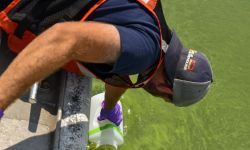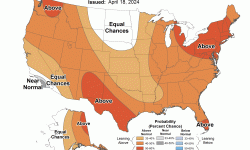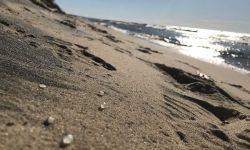Michigan fishers are warned about harmful algae ahead of trout season
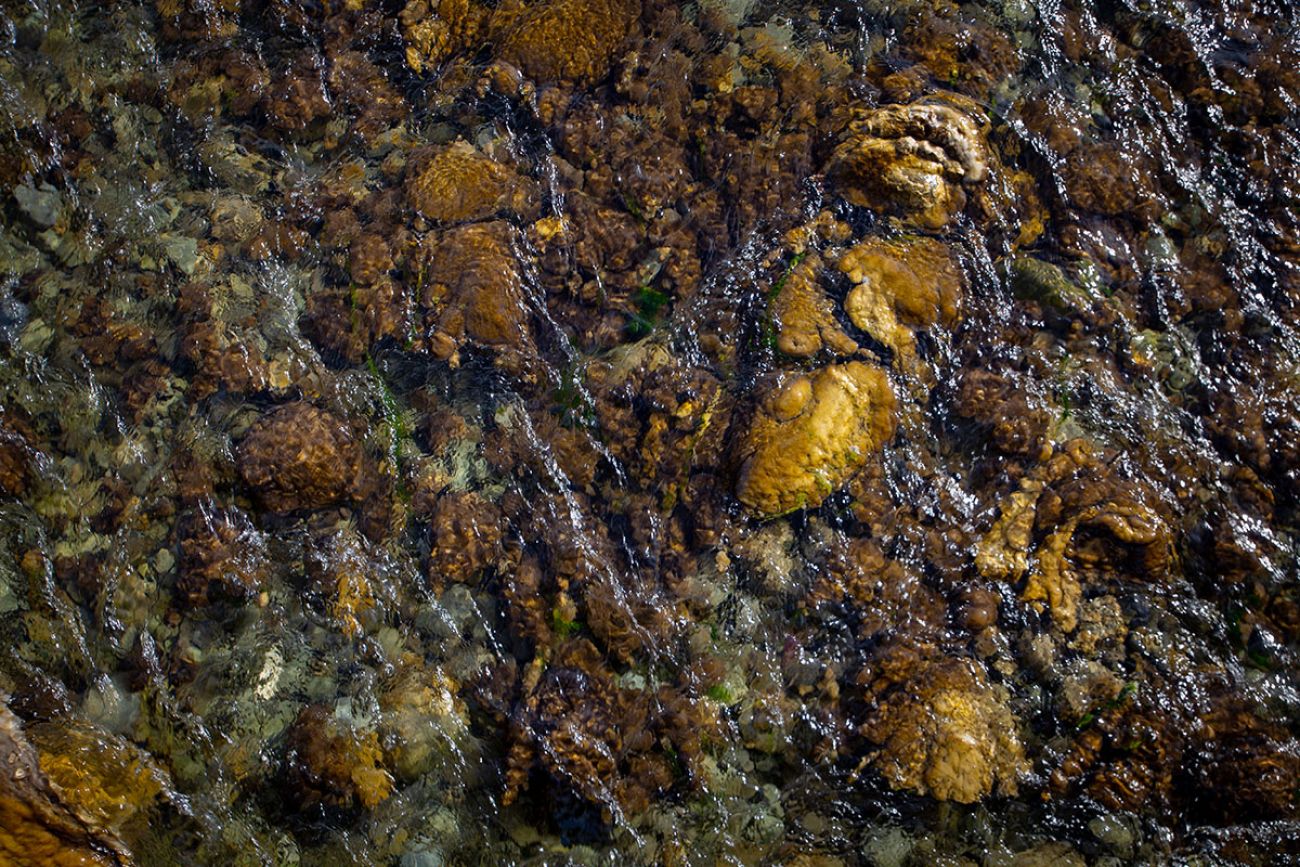

- Trout season for Michiganders begins Saturday, but anglers should be cautious not to transport harmful algae and other invasive species
- Didymo, a type of algae, and New Zealand mudsnails can disturb the food supply and overall habitat of trout
- Anglers should take extra steps between fishing trips to clean and disinfect their gear to prevent the spread of didymo and mudsnails
Michigan’s trout fishing season opens on Saturday, and the state is advising people to avoid picking up “aquatic hitchhikers” as they head for the waters.
Various trout species, from rainbow to brown trout, can be found in the Great Lakes. But an invasive species of algae found in streams continues to be a threat to the food supply and habitat of trout in Michigan.
Didymo is a microscopic algae that can be found on hard surfaces like rocks. The algae, also known as “rock snot,” is similar in appearance to tan or brown wool. The Michigan Department of Natural Resources first detected didymo in 2015 in the St. Marys River in Chippewa County. It was later found in other rivers in the northern part of the state. However, experts suspect that it is native to Lake Superior and other parts of Canada.
Related:
- Michigan updates fishing regulations for 2024 season. What you need to know
- PFAS-tainted foam in Lake Huron prompts citizen outcry
- Sault tribe challenges Michigan fishing deal, chides ‘preposterous’ rules
Didymo thrives in cool, low-nutrient and low-phosphorus water and can grow quickly, causing thick mats of algae to completely cover the bottom of rivers and streams, according to the department. These thick plates smother aquatic plants and ruin the habitat for aquatic insects like stoneflies and nymphs which trout feed on.
The algae can also affect water flow and can decrease the water oxygen levels necessary for trout to survive when it starts to decompose.
“Beyond just the impact to the fish themselves, when those blooms happen with didymo, they can be, frankly, just unpleasant to look at,” said Lucas Nathan, aquatic invasive species coordinator for the DNR’s fishery division. “It can also be a challenge for anglers because it can get in the way of angling activities. Beyond biological impacts, there’s some concern that these blooms continue to happen more and more frequently.”
Didymo cells can be transported on boats, anchors and other fishing gear like waders, felt-soled boots and nets. The best practice for preventing the spread of didymo is to always clean, drain and dry fishing gear between each trip and before moving to a different body of water, according to the state.
“Anglers that might be bouncing around, going from river one to river two to river three, maybe within a single day or a single weekend. Those types of anglers are at a particularly high risk for moving things around because they are jumping from river to river,” Nathan said. “Those are the types of actions that we want to be extra careful that they’re taking the necessary decontamination steps.”
It’s also recommended that anglers have specific gear that is only used in infested waters. Though visiting multiple bodies of water on the same day is discouraged, those who do so should plan enough time between trips to decontaminate gear.
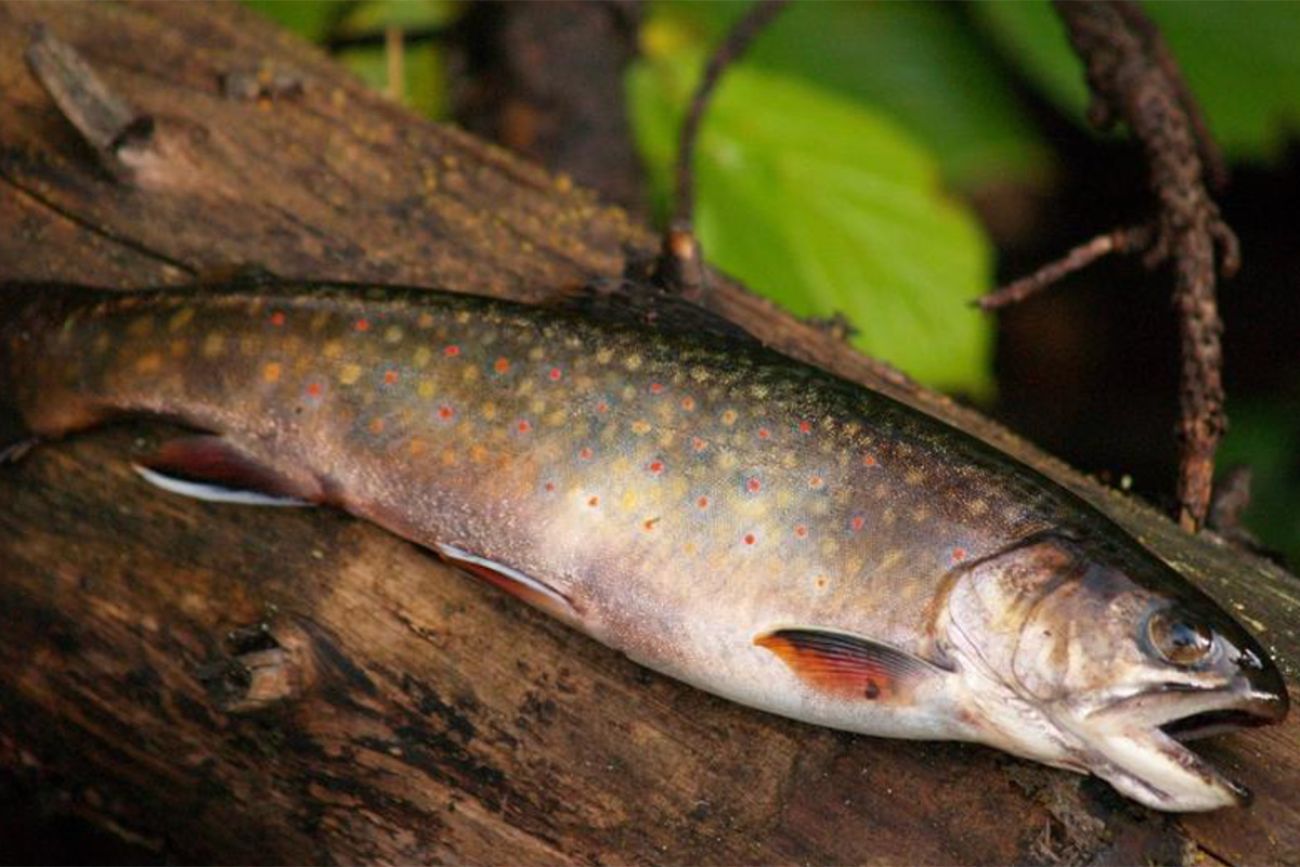
Transporting tiny snails
Anglers should also be cautious of New Zealand mudsnails, tiny snails about an eighth of an inch long whose shells typically have 5-6 whorls open on the right side.
These tiny snails can result in invertebrate populations like mayflies and caddisflies becoming scarce, Nathan said. Trout may not forage in bodies of water where mudsnails are present.
They also don’t provide any nutritional value to fish and can reduce the growth of trout.
Preparing for the season
Before heading out to fish, residents should ensure that they have an updated fishing license. The 2024 license year began April 1 and is valid through March 31, 2025.
Licenses can be purchased online, through the Michigan DNR Hunt and Fish app or at some sporting goods locations.
Residents 17 years or older can purchase a fishing license for $26 which permits them to catch any species, and residents 65 years or older or those who are legally blind can purchase one for $11. Nonresident fishing licenses are $76.
Anglers should also take a look at recently updated regulations ahead of trout season. Under the new regulations, people are limited to one rainbow trout a day — down from the previous limit of two — if it's larger than 20 inches in type 3 and 4 streams.
The daily possession limit for lake trout and splake in the Great Lakes and connecting waters was also combined. The combined limit ranges from two to five fish a day, with the limit for northern Lake Huron rising this year from two to three.
Michigan Environment Watch
Michigan Environment Watch examines how public policy, industry, and other factors interact with the state’s trove of natural resources.
- See full coverage
- Subscribe
- Share tips and questions with Bridge environment reporter Kelly House
Michigan Environment Watch is made possible by generous financial support from:
Our generous Environment Watch underwriters encourage Bridge Michigan readers to also support civic journalism by becoming Bridge members. Please consider joining today.
See what new members are saying about why they donated to Bridge Michigan:
- “In order for this information to be accurate and unbiased it must be underwritten by its readers, not by special interests.” - Larry S.
- “Not many other media sources report on the topics Bridge does.” - Susan B.
- “Your journalism is outstanding and rare these days.” - Mark S.
If you want to ensure the future of nonpartisan, nonprofit Michigan journalism, please become a member today. You, too, will be asked why you donated and maybe we'll feature your quote next time!
